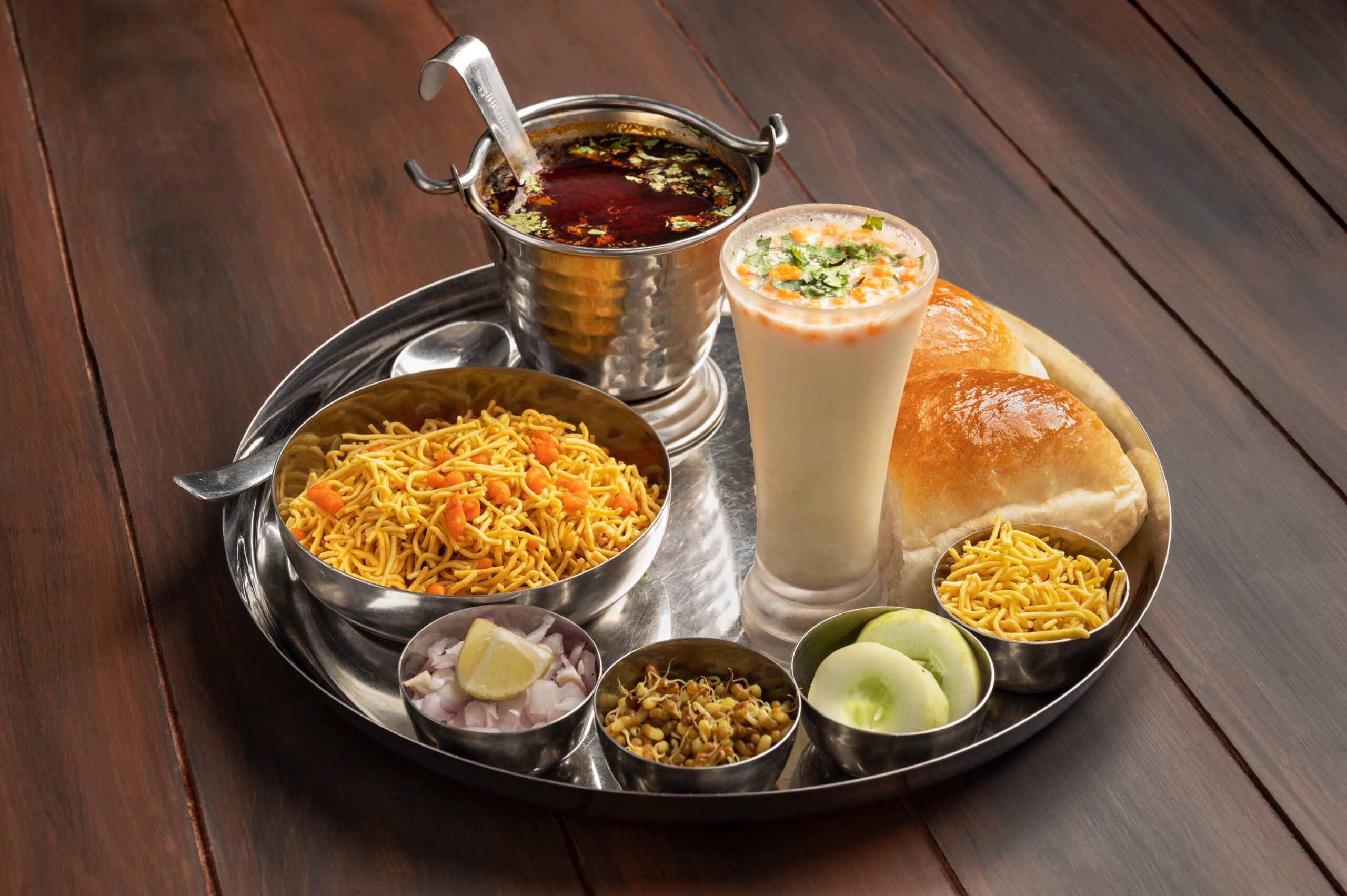The Best Misal Pav | Fast Food of Indian dish

Introduction to Misal Pav: A Flavorful Journey into Indian Street Food
Misal Pav, an iconic street food dish from the Indian state of Maharashtra, has captured the hearts and taste buds of people across the country. This beloved fast food dish is a symphony of flavors, featuring sprouted lentils in a spicy gravy, garnished with an array of crunchy toppings, and served alongside soft pav bread. Misal Pav doesn’t just tantalize the palate with its rich blend of spices; it also offers a hearty and satisfying meal experience. In this article, we embark on a culinary exploration, uncovering the origins, key ingredients, step-by-step preparation instructions, regional variations, serving suggestions, health benefits, and expert tips to help you create the ultimate Misal Pav at home. Join us as we unravel the secrets behind this cherished Indian dish.
The Origins and History of Misal Pav
Misal Pav is more than just a dish; it’s a culinary journey that traces its roots to the bustling streets of Maharashtra, particularly in the city of Kolhapur. Street vendors in Kolhapur are credited with its creation, and over time, Misal Pav has become an integral part of Maharashtrian cuisine, celebrated by people from all walks of life.

Misal Pav
Ingredients
For Misal Gravy:
- 1 cup sprouted moth beans (matki)
- 1 small onion, finely chopped
- 2 tomatoes, finely chopped
- 3 cloves of garlic, minced
- 1 inch piece of ginger, grated
- 2-3 green chilies finely chopped (adjust to your spice preference)
- 1/2 tbsp mustard seeds
- 1/2 tbsp cumin seeds
- 1/2 tbsp turmeric powder
- 1 tbsp red chili powder (adjust to taste)
- 1 tbsp garam masala
- 1/2 tbsp cumin-coriander powder
- Salt to taste
- 3 tbsp oil
- Chopped coriander leaves for garnish
- Thin sev (crunchy chickpea noodles) for topping
For Farsan (Garnish):
- 1 cup poha (flattened rice)
- 1/2 cup mixed farsan (spicy sev or chivda)
- Chopped onions
- Chopped tomatoes
- Chopped coriander leaves
- Lemon wedges
- Pav buns
Instructions
- Heat oil in a pan. Add mustard seeds and let them splutter. Then, add cumin seeds and sauté for a few seconds.
- Add chopped onions, garlic, ginger, and green chilies. Sauté until the onions turn translucent.
- Add the chopped tomatoes and cook until they become soft and the oil starts to separate.
- Add turmeric powder, red chili powder, garam masala, cumin-coriander powder, and salt. Mix well and cook for a couple of minutes.
- Add the sprouted moth beans and mixed sprouts (if using). Stir well and add a little water. Cover and simmer until the sprouts are cooked through.
- While the sprouts are cooking, wash the poha and soak it in water for a few minutes. Drain and set aside.
- Once the misal gravy is ready, assemble the Misal Pav. In a serving bowl, place a layer of poha, followed by the hot misal gravy.
- Top it with chopped onions, tomatoes, coriander leaves, and a generous amount of farsan (spicy sev or chivda).
- Squeeze fresh lemon juice over the top for extra flavor.
- Serve Misal Pav with pav buns on the side. Optionally, you can lightly toast the pav buns with butter or oil.
- Sprinkle some thin sev on top for added crunch and enjoy your Best Misal Pav!
Notes
Additional Tips:
1. Adjust the spice level according to your taste by varying the amount of green chilies and red chili powder. 2. You can customize the toppings with other ingredients like grated coconut, yogurt, or additional chutneys for a unique twist. 3. Misal Pav is often served with a spicy gravy (Kat) on the side. You can make the Kat by thinning down a portion of the misal gravy with water. 4. It’s traditional to serve Misal Pav with pav buns, but you can also enjoy it with regular bread or dinner rolls.Health Benefits of Misal Pav
Nutritional Value of Misal Pav’s Ingredients
Despite its indulgent reputation, Misal Pav boasts considerable nutritional value. The sprouted lentils provide protein, fiber, and essential vitamins. The aromatic spices, such as cumin, coriander, and turmeric, offer various health benefits, including aiding digestion and boosting immunity. Legumes like moth beans or matki deliver a steady supply of protein and complex carbohydrates. Enjoy your Misal Pav with the knowledge that it is not only delectable but also nutritious.
Healthy Cooking Tips and Modifications for Misal Pav
For a healthier spin on Misal Pav, consider these modifications. Opt for whole wheat pav buns instead of regular ones to increase fiber content. Rather than deep-frying the poha or chivda garnish, lightly toast them in a pan with a touch of oil for a healthier alternative. You can also control the spice level by adjusting the amount of red chili powder and green chilies, tailoring the dish to your preferences. Healthy eating is about finding a balance that suits you, so don’t hesitate to experiment and craft your nutritious masterpiece.
Conclusion
In conclusion, Misal Pav is more than a dish; it’s a culinary adventure that continues to captivate food enthusiasts with its bold flavors and vibrant culinary traditions. Whether you prefer the traditional recipe or enjoy experimenting with spicy or fusion variations, Misal Pav promises a mouthwatering experience that is hard to resist. So, next time you crave a quick and satisfying meal, consider preparing the Best Misal Pav in the comfort of your own kitchen. With the knowledge gained from this article, you’ll be equipped to create a delightful dish that will transport you to the bustling streets of India. Embrace the flavors, savor each bite, and relish in the joy of this beloved Indian fast food. Happy munching!
FAQ
1. Can I make Misal Pav without sprouted lentils?
Yes, you can substitute sprouted lentils with regular cooked lentils or mixed beans for a delicious alternative.
2. Is Misal Pav a spicy dish?
Yes, Misal Pav is known for its spiciness, but you can adjust the spice level to your preference.
3. Can I make Misal Pav vegetarian or vegan?
Absolutely, by using vegetarian or vegan-friendly ingredients like vegetable oil and plant-based yogurt or chutneys.
4. Can I freeze leftover Misal Pav?
Yes, you can freeze it, but the texture and flavors may change. It’s best enjoyed fresh or by storing components separately.
